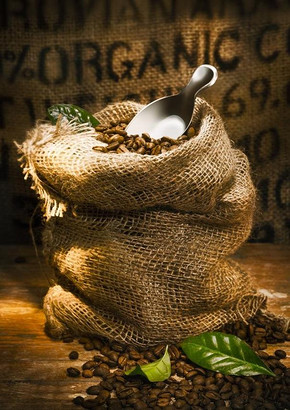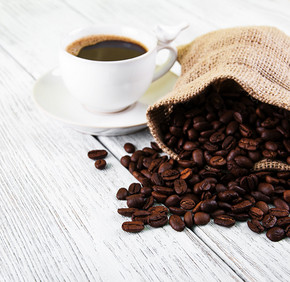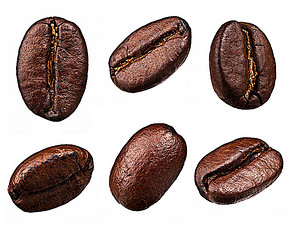Panamanian Flower Butterfly Coffee Bean production region species and names Historical Origin resume
Follow the caf é (Wechat official account vdailycom) and found that Beautiful Cafe opened a small shop of its own.
Since early times, Panama's coffee industry has relied on the skilled hands of Ng ö be-Bugl é Ngabe-Burger Panamanian Native Indians, who have for decades migrated from their home "comarca Hill" to work on the Baru Volcano Coffee Farm.
Ng ö be-Bugl é Ngabe and Burger are actually two different languages / the languages of indigenous groups are not interlinked. The larger Ngabe speaks Ngabe, while the smaller ethnic group, Burger, speaks Bugle; both are members of the Chibucha family. Overall, these two groups account for the largest indigenous population in Panama. Ng ö be-Bugl é Ngabe and Burger live in the reserve, located northeast of Chiriki in the mountains, which is part of the Taramanca Mountains.
Ng ö be-Bugl é Ngabe and Burger Panamanian Indians are valuable workers in coffee production: what we have learned from them allows ripe cherries to choose the right technology. With the selection of cherries, Panamanian Indian aborigines pick them by hand to ensure coffee quality control, which makes Panamanian coffee unique.

Coffee farms in Panama respect the culture and way of life of indigenous Indians and strive to improve their conditions. Some members of the SCAP Panamanian boutique coffee association have comprehensive social programs for health, nutrition, education and proper care of children to provide a better quality of life for them and their families.
Some varieties of coffee are produced in the Chiriki Heights of Panama. The main choices are the quality and yield of coffee beans and the weather and plague resistance of plants. At present, Panamanian boutique coffee mainly cultivates the following varieties:
Geisha- (Arabica variety, sometimes translated as geisha coffee) Rose Summer Coffee plant is called long bean, or coffee cherry, Panama Rose Summer Coffee is bright honey and citrus flavor, offering excellent taste and cup testing characteristics. Panamanian Rosa Coffee has soft and strong floral and jasmine aromas and unique although subtle acidity, balance, bright white wine and berry, mango, papaya, and orange flavors. The aftertaste provides a distinct bergamot feel. The rose variety was first discovered in 1931 in southwestern Ethiopia and was first introduced to Panama from Costa Rica in 1963.
Typica- this is the basis of many kinds of coffee. Like other small-grain coffee varieties that have been developed, the Ironpickup coffee plant has a conical one with a major vertical trunk and sub-vertical growth at a slight tilt. Typically, a tall plant is 3.5-4 meters high. The lateral branches form a 50-70 °angle and a vertical trunk. Iron pickup coffee has a very low production, but there is a cup to test excellent quality.
Brazilian variety of San Ramon san ramon- iron pickup
Bourbon-bourbon coffee plants produce 20-30% more coffee than typical, but have a smaller harvest than most coffee varieties. Bourbon coffee has a less conical shape than a typical plant, but has more secondary branches. The angle between the branch and the main stem is small, and the branch points of the main stem are dense. Broad and wavy on the edge of the leaf. The fruit is relatively small and dense. Cherries ripen quickly and risk falling off in a strong wind or rain. The best result of bourbon coffee is to achieve the need between the feet. The quality of the cup is excellent, similar to the typical.
Katula-Caturra is a mutation found in bourbon coffee in Brazil. It is a mutant with high yield and good quality, but requires a lot of care and fertilization. It is a short, thick core with many branches. It has wavy boundaries similar to coffee bourbon leaves. It is well adapted to almost any environment, but preferably with 2500-3500 mm annual precipitation between 1500-5500 feet. At high altitudes, the quality increases, but the yield decreases.
Kaduai-catuai is produced by the high-yield coffee factory from the intersection between New Mondou and Caturra. Plants are relatively short and form close angles and main branches with lateral branches. A branch of fruit that is not easy to fall off, which is a favorable area for strong winds or torrential rain. Catuai also needs adequate fertilization and care.
Important Notice :
前街咖啡 FrontStreet Coffee has moved to new addredd:
FrontStreet Coffee Address: 315,Donghua East Road,GuangZhou
Tel:020 38364473
- Prev

Colombian emerald coffee
Following Cafe Review (Wechat official account vdailycom) found that Beautiful Cafe opened a small shop of its own, Mirador Manor is located in the southernmost Pitalito (Pitalito) producing area of Huila (Huilan) region, which is famous for producing high quality coffee. Elkin Guzman, the owner of the garden, is undoubtedly a pioneer in the coffee industry. This clever young grower
- Next

How do coffee beans grow?
Following Cafe Review (Wechat official account vdailycom) found that Beautiful Cafe opened a small shop of its own how coffee beans grow out of coffee trees originating in Ethiopia in Africa. In botany, the coffee tree belongs to the evergreen tree of the subgenus Rubiaceae, and the coffee beans, commonly known as coffee beans, are the seeds of the fruit of the coffee tree, just because they are shaped like beans.
Related
- Detailed explanation of Jadeite planting Land in Panamanian Jadeite Manor introduction to the grading system of Jadeite competitive bidding, Red bid, Green bid and Rose Summer
- Story of Coffee planting in Brenka region of Costa Rica Stonehenge Manor anaerobic heavy honey treatment of flavor mouth
- What's on the barrel of Blue Mountain Coffee beans?
- Can American coffee also pull flowers? How to use hot American style to pull out a good-looking pattern?
- Can you make a cold extract with coffee beans? What is the right proportion for cold-extracted coffee formula?
- Indonesian PWN Gold Mandrine Coffee Origin Features Flavor How to Chong? Mandolin coffee is American.
- A brief introduction to the flavor characteristics of Brazilian yellow bourbon coffee beans
- What is the effect of different water quality on the flavor of cold-extracted coffee? What kind of water is best for brewing coffee?
- Why do you think of Rose Summer whenever you mention Panamanian coffee?
- Introduction to the characteristics of authentic blue mountain coffee bean producing areas? What is the CIB Coffee Authority in Jamaica?

